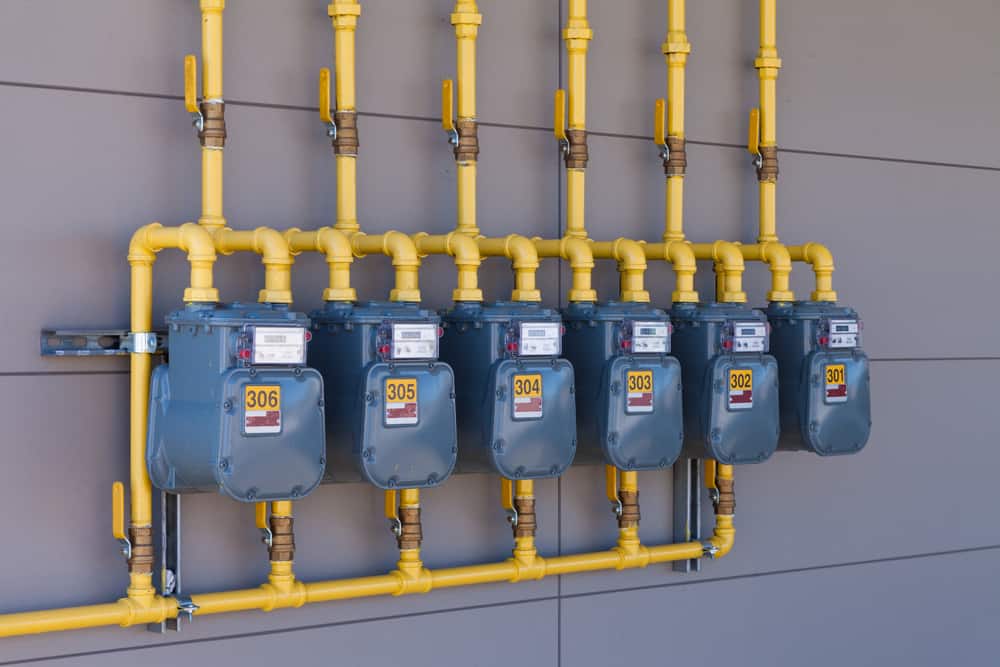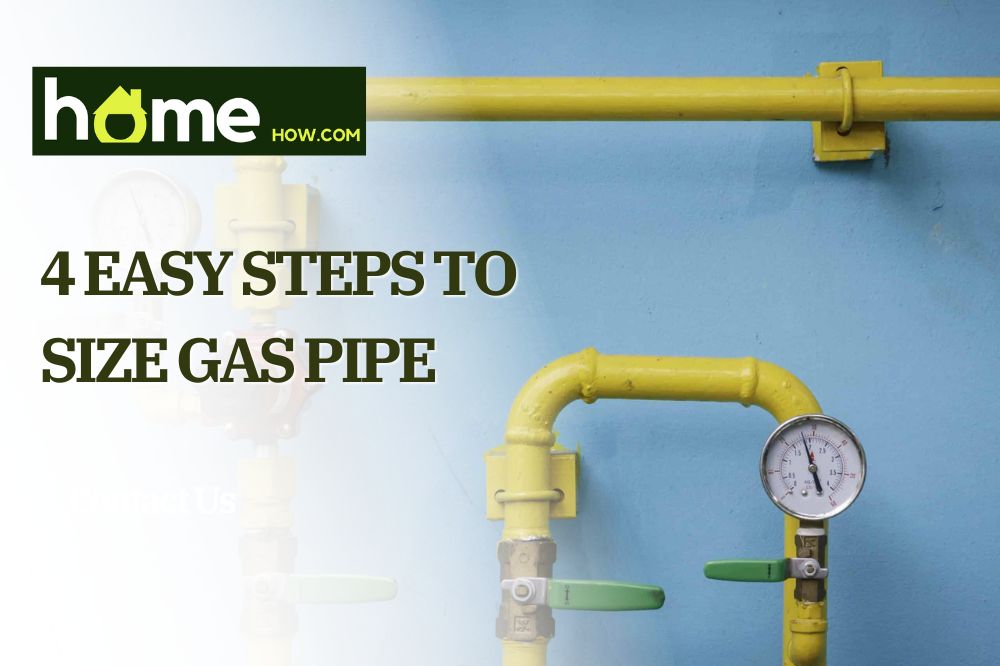Are you embarking on a natural gas project? Are you experiencing flow rate or pressure problems in your gas installation?
Any of these scenarios require you to determine how to size gas pipe. Learning the gas pipe size can help eliminate low pressure, inefficient flow rate, and energy wastage.
There is a basic formula to size gas pipe, ensuring your installation is efficient and dependable whether you use it in a domestic or commercial setting.
In this article, I will explain how you can size gas pipes and the important factors to consider in the process to ensure your gas piping can supply all the connected appliances with sufficient gas for consumption.
So, let’s jump in!
Importance of Correct Gas Sizing
Not just any pipe can be used in a gas supply system. Using the right size pipe ensures the safety and efficiency of the entire application.
The pipe size determines how much gas can pass through the pipe and reach the receiving application. Longer pipes might seem ideal but excessive length can result in lower volumetric gas flow measured in British Thermal Units (BTUs) per hour. Learning about gas pipe sizes, including the diameter and length, helps you understand how much gas can pass along the piping system.
As a general rule of thumb, for a gas piping system to work efficiently, the pressure loss should not be more than the difference between the starting pressure at the gas meter and the pressure at the appliance.
Gas Pipe Sizing Variables

Several factors come into play when determining gas pipe size. A basic understanding of these variables will help calculate and determine the right pipe size for your natural gas installation.
Nominal size
The nominal size of gas pipe refers to the exterior size, which generally serves as a reference point when sizing pipe for gas systems. The interior size of the pipe is usually smaller. For example, a pipe with a 2-inch nominal size will have an internal size of slightly less than one inch.
Pipe length
Pipe length plays a big role in determining how much gas flows through the pipe. The longer the pipe, the lower the gas pressure. But, you must also take into account the pipe’s nominal size. Pipe with smaller nominal size may restrict the pressure flow. Large pipe delivers higher pressure, but it comes with concerns about cost-effectiveness.
Application
Generally, gas pipe comes up to about four inches in nominal size, but it is common for some gas systems to use 8-inch pipes. The precise gas pipe size will vary from one application to another. Smaller gas systems may need pipe with a smaller nominal size to allow the pipe to transport the gas directly to a specific appliance. This pipe will also likely be shorter due to the size of the application in use. Larger gas systems supplying several applications will need longer pipe of a slightly larger nominal size to deliver the desired pressure at the appliance point.
Type of pipe
The pipe material greatly impacts the amount of BTUs the gas piping system can deliver to the appliance.
The type of pipe you use will depend on your building codes, but copper and steel pipe is the most common. Polyethylene and PVC pipes may apply in outdoor and underground piping gas systems. Depending on the application, you may also use other pipe materials such as iron, yellow brass, and aluminum.
Step-by-Step Guide on How To Size Gas Pipe
Now that we’ve explored the basic variables that influence gas pipe size and the efficiency of the gas system, let’s look at how to size the pipe for safety and efficiency.
Step 1: Consider the number of appliances requiring gas
When setting up a natural gas system, you must consider the number of appliances you will include in the system to receive gas. The number of appliances to be serviced will influence the pipe length and nominal size.
For example, will the gas system service a boiler only, or will the installation include additional appliances such as a cooker and a cooling and heating system? These considerations will influence the pipe size.
Step 2: Determine the appliances’ mechanical requirement
Aside from efficiency and cost-effectiveness, safety should be your priority when determining the right size pipe for your gas system installation.
Matching the pipe size and type to the appliance’s mechanical and technical requirements can help ensure the gas system’s safety and integrity.
Where the technical and mechanical requirements are concerned, the most important details to look out for are each appliance’s inlet pressure and the flow rate.
Pro tip: It helps to draw your piping system to help visualize the installation process and determine the amount of pipe and fittings you need. The layout should start from the gas meter point and include all the appliances requiring gas.
Step 3: Determine the pipe size
The Longest Length is the most common pipe sizing method. The method entails determining the longest length of pipe from the delivery point, regulator, or gas meter, to the furthest appliance on the system. This length is known as the index length.
When determining the index length, you should account for possible pressure loss resulting from fittings and bends. The basic formula for accounting for pressure loss is to add 20% of the original index length to this figure.
For example, if the length from the gas meter to the furthest appliance on the system is 35m, the estimated index length after adding the 20% will be 42m, i.e., 35+ (35×0.2).
Step 4: Refer to a gas system sizing chart
Obtain a commonly used sizing chart to help you determine the right size pipe (in terms of nominal diameter) you will require based on the BTU (flow rate) and pipe length.
Use the index length as the reference point and the combined BTUs of the appliances in the system. Next, use the table to identify the pipe length equal to or greater than the index length.
Then, look at each appliance’s flow rate (BTU) requirements. The table identifies the BTU figure equal to or greater than the BTU for each appliance. Then, check the corresponding pipe size.
When using the Longest Length method for gas pipe sizing, some factors to keep in mind are the building height, different pressure requirements, and the type of appliances.
The extra height will influence variables such as pipe length and pressure requirements if you are doing a gas piping installation in a very tall building.
The appliances in your gas system may have different pressure requirements. This is common and is nothing to worry about. But, when sizing gas pipe, use the highest pressure requirements in your calculation.
Lastly, even if you have several appliances in your gas piping system, they will not all operate simultaneously. As such, it is not necessary to enable 100 percent demand.
Calculating Pipe Diameter Using Volumetric Flow Requirements
As a general rule, process engineers recommend a velocity of 90-100 feet per second of gas flowing through pipe. You can use this standard to determine the right size pipe diameter.
To complete the calculation, you should find out each appliance’s total volumetric flow rate requirement on the gas piping system. This information is usually indicated on the appliance.
So, let’s say the required volumetric flow rate is 110,000 cubic feet per hour at 190 psi (pounds per square inch).
To determine the pipe diameter, use the industry-recommended velocity and the volumetric flow rate. The recommended gas velocity through pipe is 90-100 feet per second so let’s use an average of 95 feet per second.
First, convert the recommended velocity from feet per second to feet per hour. To do this, multiply the recommended velocity of 95 by 3,600 seconds (equivalent to one hour). The result is 342,000 feet per hour.
Next, find the pipe’s nominal diameter by dividing the appliances’ volumetric flow requirements (110,000 cubic feet per hour) by the velocity, i.e., 110,000 divided by 342,000. The result is 0.29 square feet, which is the pipe’s diameter.
Summary: How To Size Gas Pipe
Determining the right gas pipe size is the first step in ensuring an effective, efficient, safe, natural gas system installation. The Longest Length method is the most commonly used when sizing gas pipe for a system with more than one appliance. With one appliance, you can calculate the nominal diameter using the industry-recommended velocity value and the appliance’s volumetric flow rates for simple systems.
Resources:
https://www.edcgov.us/Government/building/documents/Gas%20Pipe%20Sizing%20%28Natural%29.pdf
https://fire-boulder.com/wp-content/uploads/2014/08/PipeSizing.pdf
https://www.engineeringtoolbox.com/natural-gas-pipe-sizing-d_826.html
